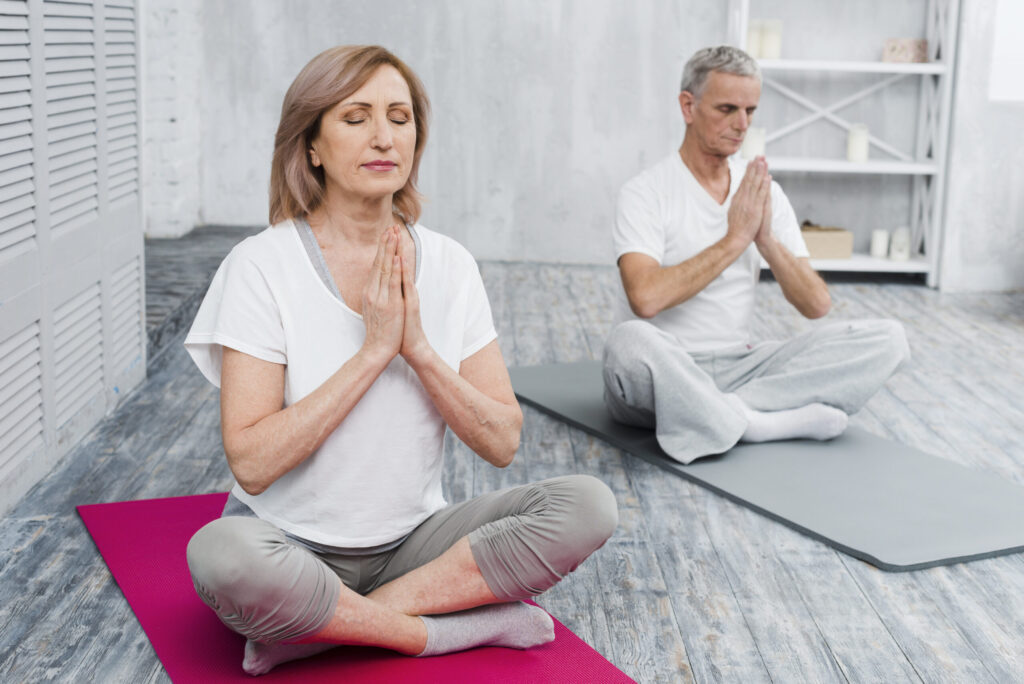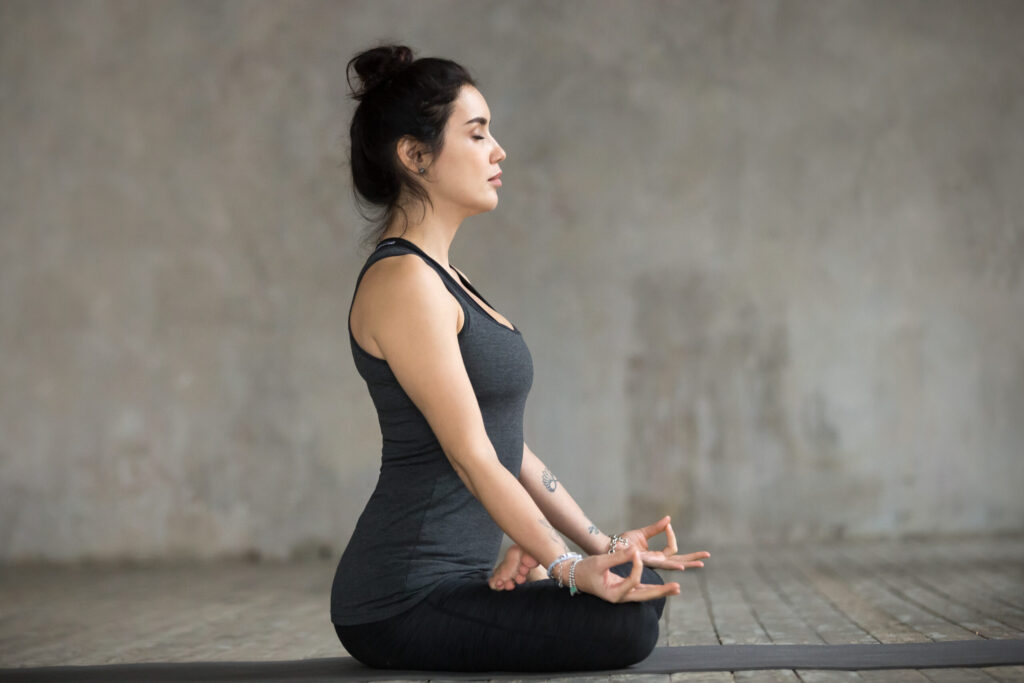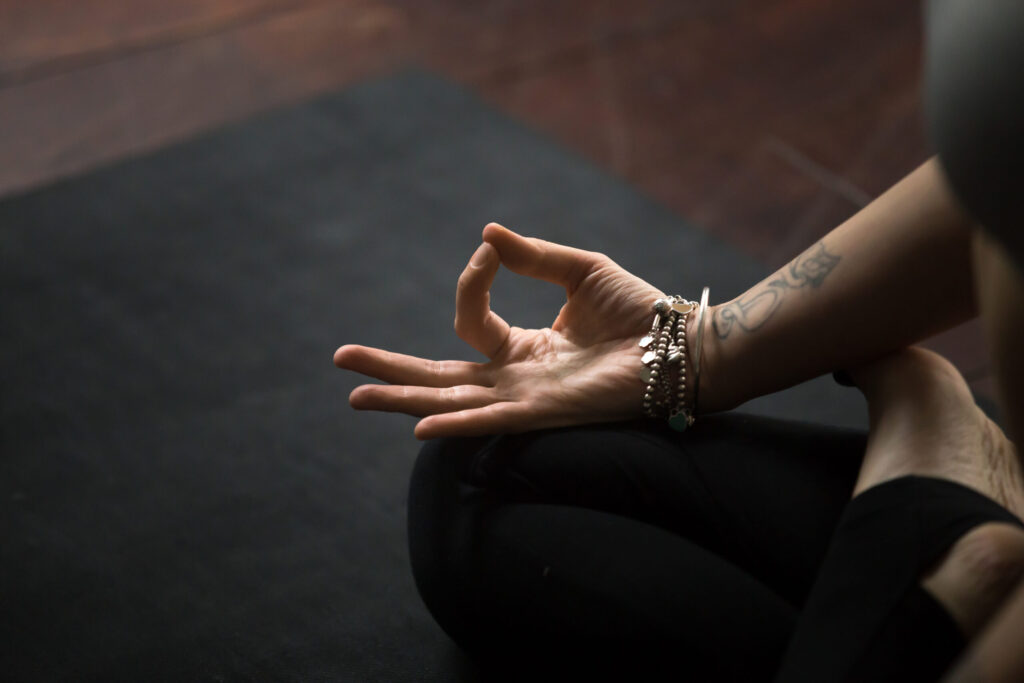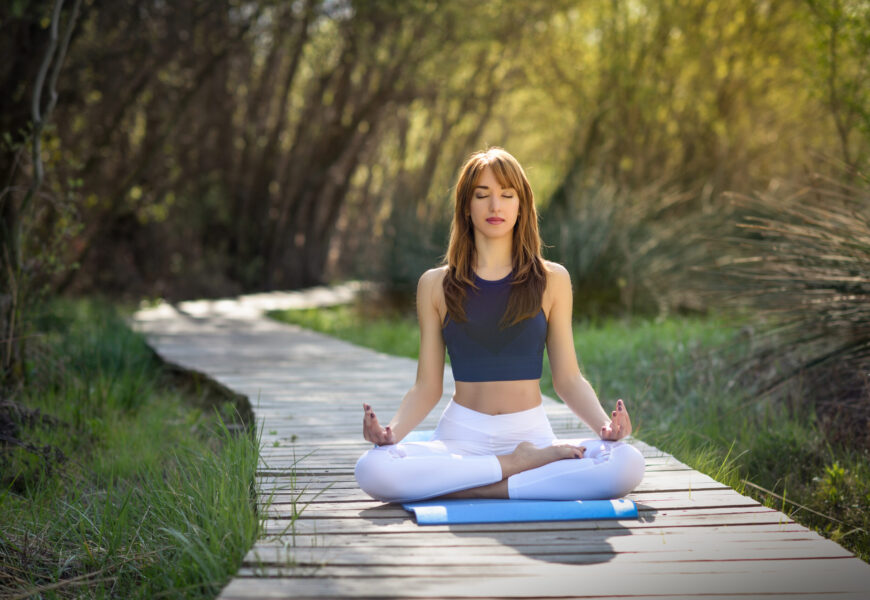High blood pressure, medically known as hypertension, affects a staggering number of individuals across the globe. As alarming as it may sound, nearly one in three Americans struggles with high blood pressure, according to data from the Centers for Disease Control and Prevention (CDC).
The journey toward addressing high blood pressure extends far beyond the realm of medications and conventional treatments. The pursuit of holistic well-being has brought the healing potential of yoga into the limelight, offering a gentler and more nurturing path to managing this health challenge. This article delves into the transformative world of yoga for high blood pressure, exploring how this ancient practice can serve as a powerful ally in revitalizing your health.
This widespread health concern places approximately 75 million adults in the United States at an increased risk of serious cardiovascular issues. In a surprising twist, recent changes in the definition of high blood pressure have led experts to estimate that nearly half of all Americans are now affected by this condition.
Understanding High Blood Pressure And Its Impact:

High blood pressure, medically termed hypertension, exerts a far-reaching influence on overall health that extends beyond mere numbers on a blood pressure reading.
This condition, affecting a substantial portion of the population, involves the force exerted by blood against the walls of arteries, which, when elevated, triggers a cascade of health concerns. Hypertension significantly heightens the risk of serious cardiovascular complications, including heart disease and stroke, both of which are leading contributors to mortality rates.
The intricate interplay between hypertension and health highlights the urgency of effective management strategies. Fortunately, amidst this health landscape, the realm of yoga for blood pressure emerges as a potential ally, offering a holistic approach that encompasses both physical well-being and stress reduction.
Yoga’s Role In Blood Pressure Management:

Yoga’s pivotal role in blood pressure management transcends the boundaries of conventional approaches, offering a holistic avenue that encompasses both the physical and mental aspects of well-being.
Incorporating yoga for blood pressure is akin to embarking on a transformative journey that goes beyond mere physical postures, encompassing breath control, mindfulness, and stress reduction.
The rhythmic flow of yoga sequences promotes circulation, supporting cardiovascular health, while the mindfulness cultivated through the practice allows for greater self-awareness and emotional equilibrium.
Through its multifaceted approach, yoga for high blood pressure offers not only a path to immediate relaxation but also a sustainable strategy for long-term blood pressure management, thereby empowering individuals to proactively participate in their health journey.
Yoga For High Blood Pressure: Science And Research:
Research has highlighted the relationship between yoga and the autonomic nervous system, the very system responsible for regulating involuntary bodily functions, including heart rate and blood pressure.
Engaging in yoga for high blood pressure often leads to a shift in the autonomic balance toward the parasympathetic branch, promoting a state of relaxation. This shift is accompanied by decreased sympathetic nervous system activity, resulting in lower blood pressure readings.
As research continues to unravel the intricate connections between yoga and high blood pressure, it becomes increasingly evident that this holistic approach holds promise not only in reducing blood pressure but also in empowering individuals to proactively engage in their health journey.
Benefits of Yoga for High Blood Pressure

Yoga, an ancient practice that harmonizes the mind, body, and spirit, has emerged as a powerful tool in the management of high blood pressure (hypertension). With its holistic approach, yoga offers a range of benefits that contribute to controlling blood pressure levels and promoting overall cardiovascular health. Here are some compelling reasons why incorporating yoga for high blood pressure in your routine can be beneficial:
Stress Reduction and Relaxation
One of the primary contributors to high blood pressure is chronic stress. Yoga emphasizes relaxation techniques such as deep breathing, meditation, and mindfulness. These practices activate the body’s relaxation response, leading to lowered stress hormone levels and subsequently reducing blood pressure.
Improved Circulation
Yoga involves gentle movements and poses that stimulate blood flow throughout the body. This improved circulation enhances the efficiency of the cardiovascular system, reducing the strain on blood vessels and potentially leading to lower blood pressure readings.
Enhanced Flexibility and Physical Fitness:
Regular practice of yoga helps improve flexibility, balance, and overall physical fitness. This can indirectly aid in hypertension management by promoting better blood vessel function and cardiac performance.
Controlled Breathing
Yogic breathing exercises, known as pranayama, focus on slow, controlled breathing patterns. This technique has been shown to activate the parasympathetic nervous system, which relaxes the body and decreases heart rate, ultimately leading to a reduction in blood pressure.
5. Weight Management
Obesity is a risk factor for hypertension. Many styles of yoga involve gentle physical activity that can contribute to weight management. Additionally, mindful eating practices cultivated through yoga can support healthier eating habits.
Yoga Poses And Practices For Blood Pressure
When designing yoga for a high blood pressure routine, it’s crucial to select poses that promote relaxation, circulation, and stress reduction. Here are some yoga poses for high blood pressure:
Child’s Pose (Balasana)
This resting pose encourages relaxation and stretches the back, hips, and thighs.
Seated Forward Bend (Paschimottanasana)
Gently stretches the spine and hamstrings, promoting blood flow.
Legs-Up-The-Wall (Viparita Karani)
An inversion that aids circulation and eases stress on the heart.
Mountain Pose (Tadasana)
Encourages proper posture and controlled breathing, promoting relaxation.
Easy Pose (Sukhasana)
Facilitates grounding and calmness through mindful breathing.
It’s important to approach inversions and intense poses with caution, especially if you have high blood pressure. Consulting with a healthcare professional or an experienced yoga instructor can help you tailor a practice that suits your individual needs. Remember that the key is to cultivate a sense of ease and well-being as you integrate these poses into your routine.
Yoga For High Blood Pressure: Guided Practice
Embarking on a yoga journey tailored for high blood pressure involves a purposeful selection of poses and sequences that align with blood pressure management goals.
Gentle Warm-Up:
Begin with a gentle warm-up to prepare your body for the practice ahead. Incorporate poses such as Mountain Pose and Easy Pose to establish a sense of grounding. Focus on steady, mindful breathing to encourage relaxation from the outset.
Standing Poses For Stability:
Gradually progress to standing poses that engage major muscle groups while promoting stability. Poses like Warrior I and II foster strength and balance, encouraging circulation and fluid movement. Keep your breath steady and synchronized with each pose to enhance its calming effect.
Breathing Awareness:
Integrate holding-your-breath awareness throughout the practice. Coordinate your movements with inhalations and exhalations, allowing the breath to guide your transitions. This synchronization not only enhances the flow of the practice but also contributes to stress reduction and blood pressure control.
Restorative Poses:
Conclude your practice with restorative poses that facilitate relaxation and restoration. Supported Bridge Pose and Corpse Pose are particularly beneficial. These poses encourage a release of tension and invite a sense of tranquility, aligning with the overall goal of blood pressure management.
Expert Insights: Yoga Instructors And Health Professionals

Experienced yoga instructors and medical professionals emphasize the benefits of yoga for blood pressure management. Yoga instructors often tailor their teachings to accommodate individuals with varying health needs, including hypertension. Medical professionals recognize yoga’s potential as a complementary approach to traditional treatments, promoting stress reduction, flexibility, and overall cardiovascular health. Seeking guidance from knowledgeable sources ensures that your yoga practice aligns with your health goals.
Cultivating A Consistent Yoga Practice
Consistency is key to experiencing the long-term benefits of yoga for high blood pressure. Integrating yoga into your daily routine doesn’t have to be overwhelming. Begin with a manageable commitment, such as practicing three times a week for 20-30 minutes.
Choose a practice time that suits your schedule, whether it’s in the morning to start the day on a positive note or in the evening to unwind. Online yoga classes, mobile apps, and local yoga studios offer resources to help you stay engaged and motivated.
Conclusion: Embracing Wellness Through Yoga
Yoga for high blood pressure management strategy can be a transformative journey toward wellness. By nurturing both your physical and mental well-being, yoga empowers you to take an active role in revitalizing your health.
As you explore different poses, breathing techniques, and mindfulness practices, you’ll discover that embracing the healing power of yoga contributes not only to blood pressure control but also to an enhanced quality of life.













